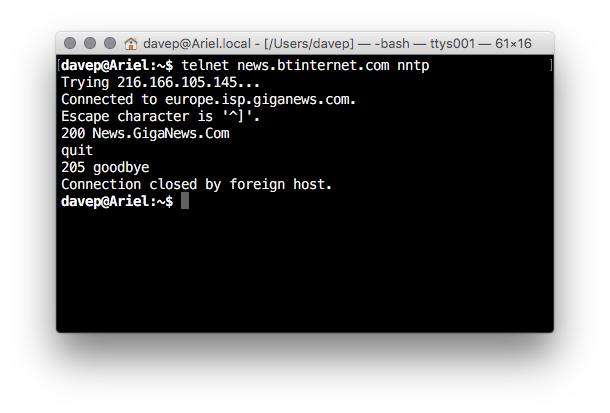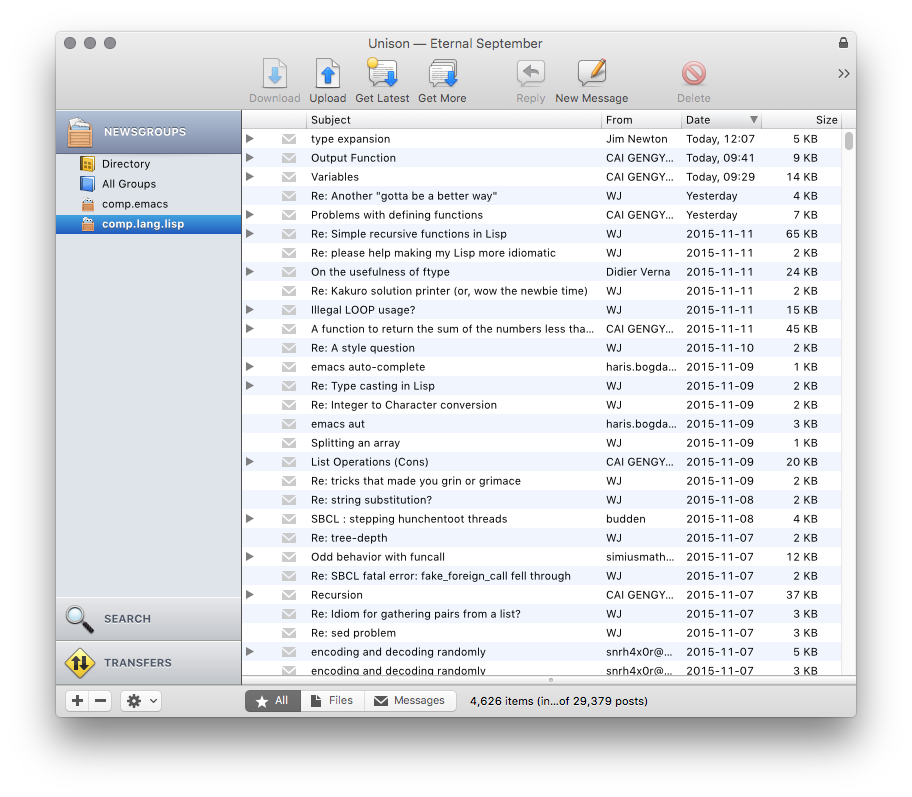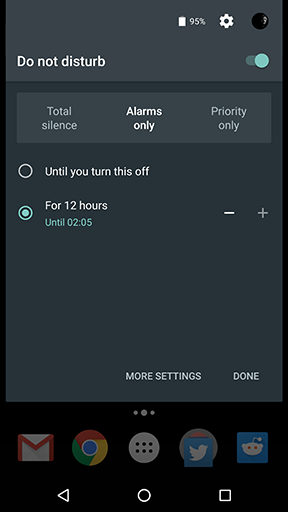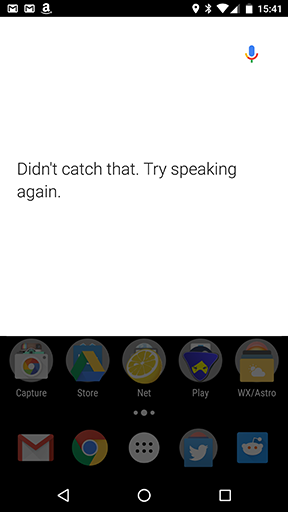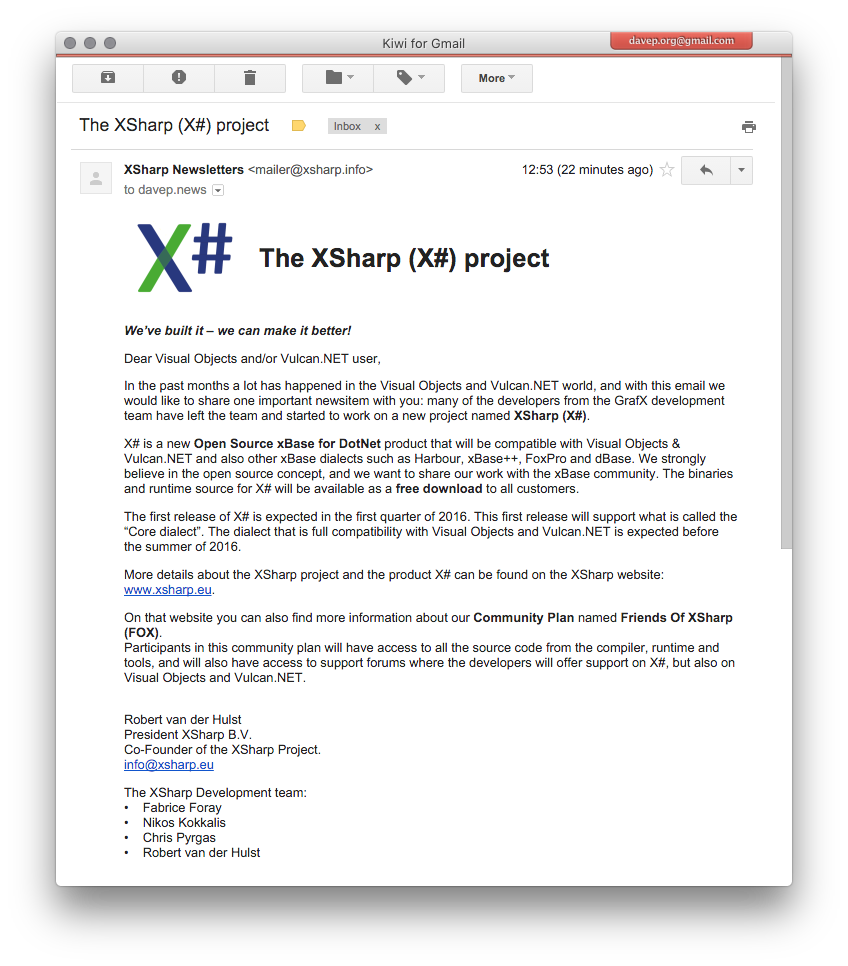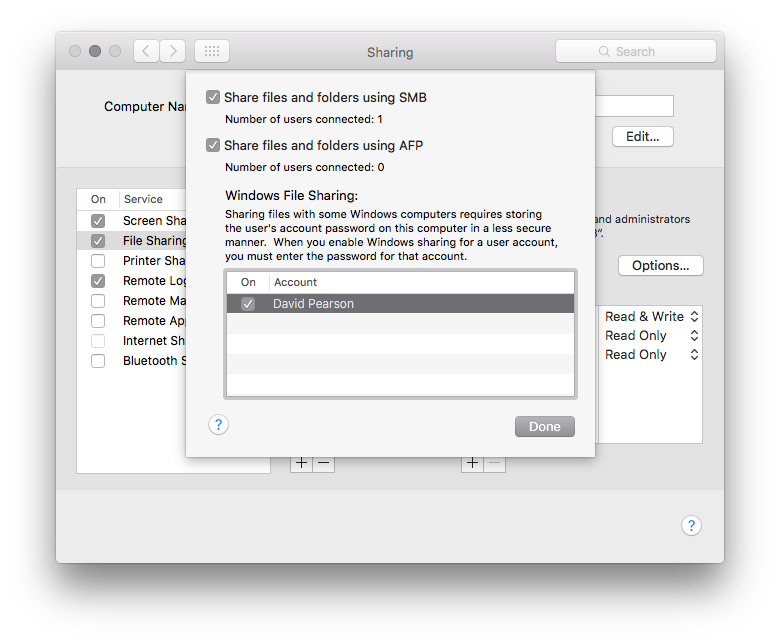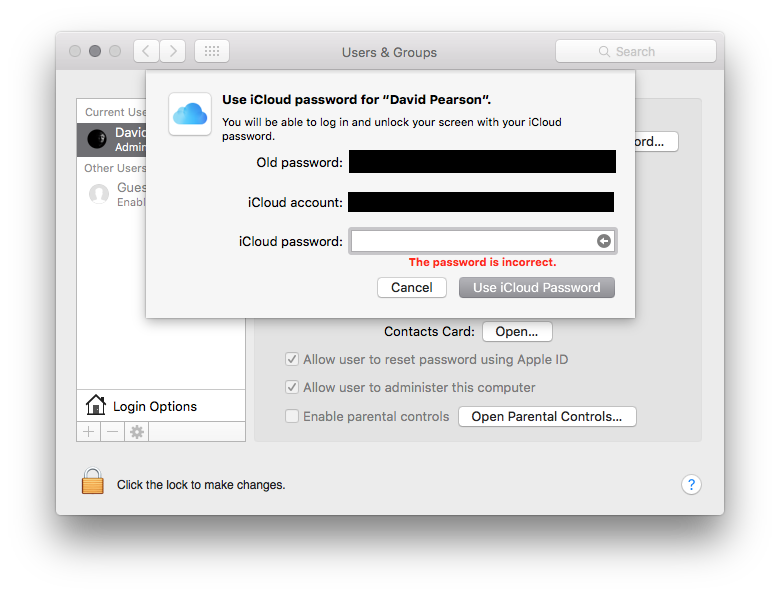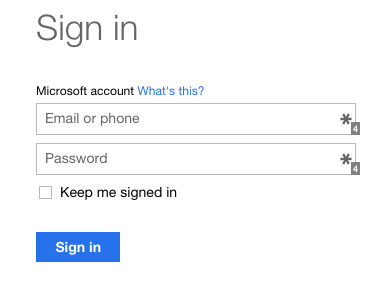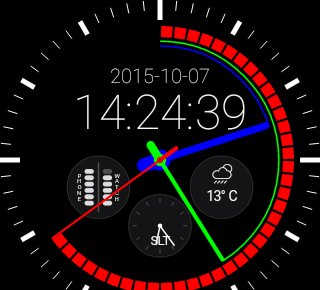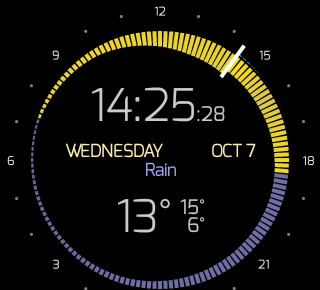My first proper BT broadband outage
Posted on 2015-11-18 11:25 +0000 in Tech • Tagged with Broadband, BT, Communication • 4 min read
Until I moved about a year ago I'd always used Demon Internet as my ISP. I stated with them during the old tenner-a-month days when there were only a handful of points-of-presence to be called. I stuck with them through them getting full local POP coverage, through having an ISDN line and then finally ADSL.
When I moved though I decided it might be easier to just go with BT; for the most part this hasn't actually been a bad decision. This week though I suffered my first proper outage with them and it was rather frustrating.
It kicked off at around 2015-11-16 21:00. I noticed that Google Drive (in Chrome) was complaining that it was offline. I then noticed that gmail and a couple of other tabs in Chrome were complaining about the same thing. I did a couple of local network checks and found nothing, checked the router and it was connected and reporting just fine, so then I rebooted the router and things appeared to improve.
For a short while anyway. Then I started to notice other problems; mostly that some sites would time out, others not. Initially I was getting a lot of DNS timeouts and, while I normally use Google's DNS servers (BT's have long had lots of problems1), I tried switching back to BT's own and that appeared to improve matters. For a while anyway.
I mentioned the issues on twitter and got a handful of replies from different people running into similar issues. It was clear that this wasn't just me. I then went looking for BT's broadband status page but hilariously was unable to load it because of the problem.
This is my first bit of real frustration with them. Here's how the page looks inside a desktop browser:
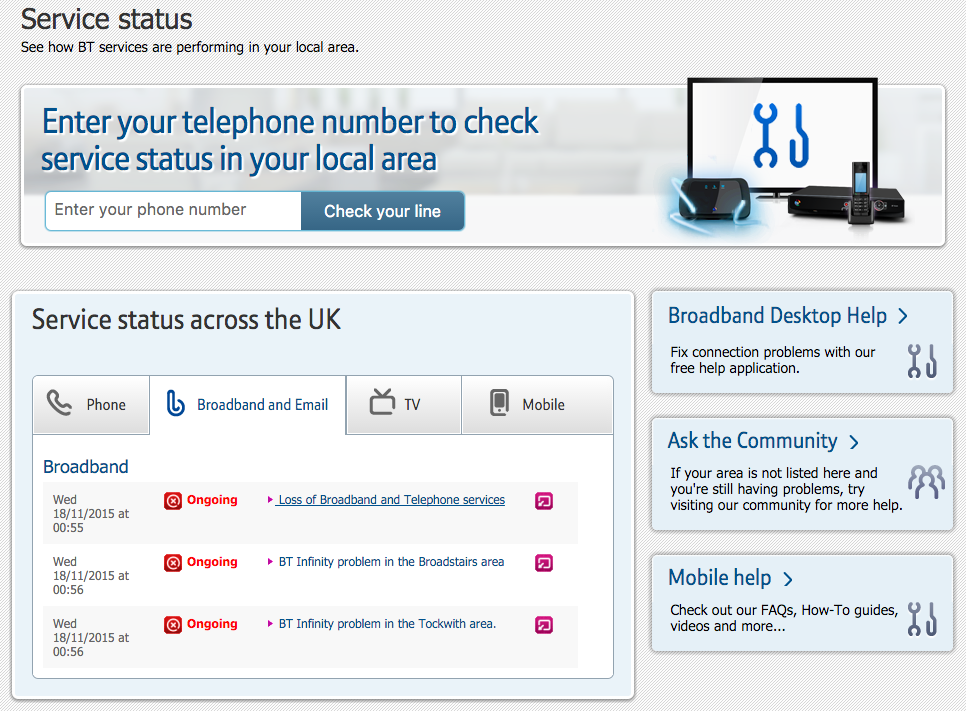
Now compare it as seen inside Android Chrome on my Nexus 6:
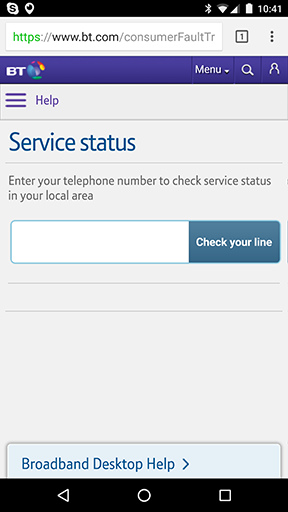
Apparently they have decided that I'd never want to be able to check why my broadband might be down, from a mobile device. Yes, sure, there's the option to put my phone number in -- perhaps it tells me after I've done that -- but I don't even know my land line number; I don't use it as a phone most of the time and so never bother remembering it. The main point here is why the hell wouldn't they include the same useful information as the desktop view? Or perhaps use geolocation of the phone to narrow things down if they feel the need.
Anyway, I gave up and went to bed. In the morning things were no better but, after another router reboot, I did manage to get a view of the status:

Finally! Acknowledgement of the problem. Worryingly though it was dated almost 12 hours after I first noticed the problem. From what I can see that date and time isn't the date and time the status was last updated, it's the date and time it was first added. That suggest that they really hadn't noticed the problem all night. It's not like it was a problem that was hard to notice, at least from a customer's point of view. Check this graph from a down detector site:
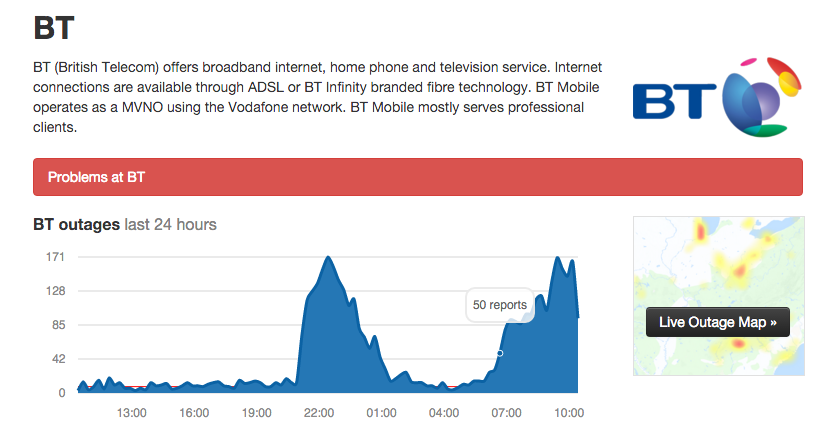
You'd think that a company as big as BT would have something in place that could catch network problems, especially ones that are able to be caught with a simple crowdsourcing "press this button if you have a problem" approach.
But... nope. Appears not. O_o
Anyway, a couple or so hours later the problem was finally fixed:
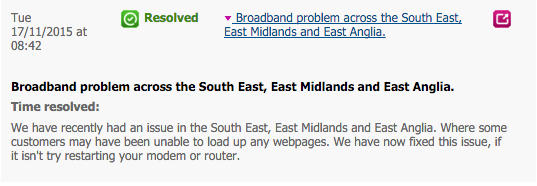
(Notice how the date and time is the same as earlier; so 100% not an update time but a first-added time) I mentioned this on twitter:
Looks like BT broadband problems are resolved. Everything working that I can see, and this... pic.twitter.com/m5Mo7vm5Yu
— Dave Pearson (@davepdotorg) November 17, 2015and I even got a reply (which I'd not gone looking for, so that was nice):
@davepdotorg Yes Dave we have the problem fixed, if you still notice a few issues then reset the hub and try again. ^Chris
— BT (@BTCare) November 17, 2015
Curious as to why it'd take almost 12 hours from the problem appearing to it being acknowledged on their status, I thought I'd ask:
@BTCare All looking good. Any reason why it took 12 hours to acknowledge?
— Dave Pearson (@davepdotorg) November 17, 2015
which got this reply:
@davepdotorg Sorry it took so long, identifing the source of the problems would have taken some time. ^Shane
— BT (@BTCare) November 17, 2015
which doesn't really make a whole lot of sense. Sure, you to spend time identifying the source of a problem to fix it, but you don't need to do that to notice and acknowledge that there's a problem. I've asked again but haven't received any sort of reply as of the time of writing (I'm not expecting one really).
What I take from all of this is that BT are shockingly bad at keeping people informed of problems with their service when there's a large outage. I find that kind of annoying. I don't mind that there are problems, I do mind when a company can't take the time to clearly and quickly state "yup, it's us, it's not you, we're looking into it..."
-
Don't even get me started on how the HH5 won't allow setting of DNS servers in the hub itself. That's stupid and frustrating beyond words. ↩
